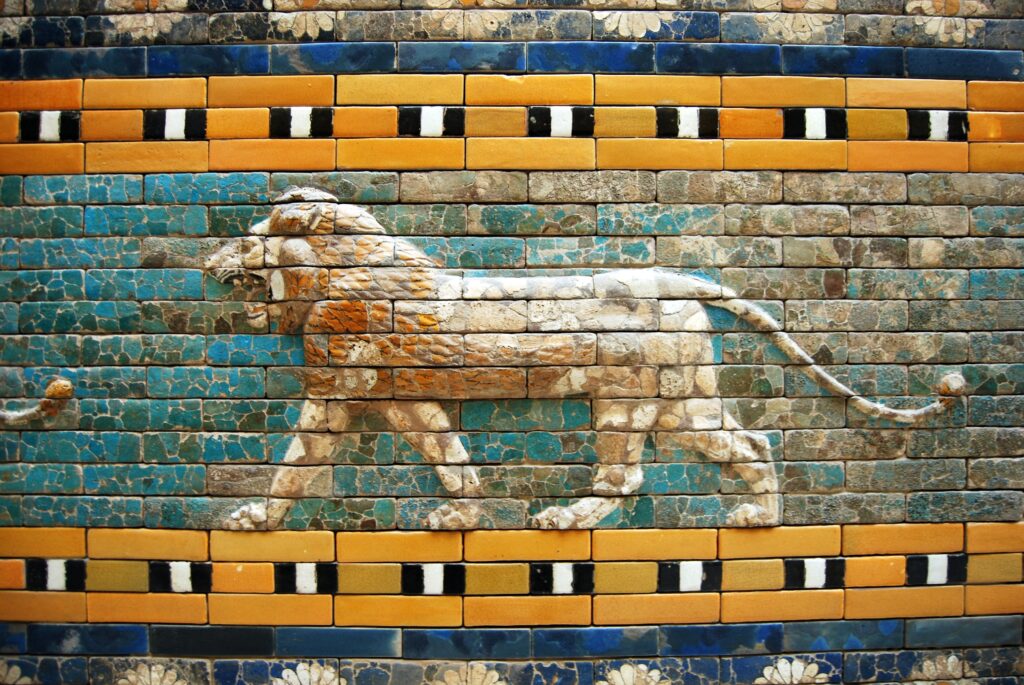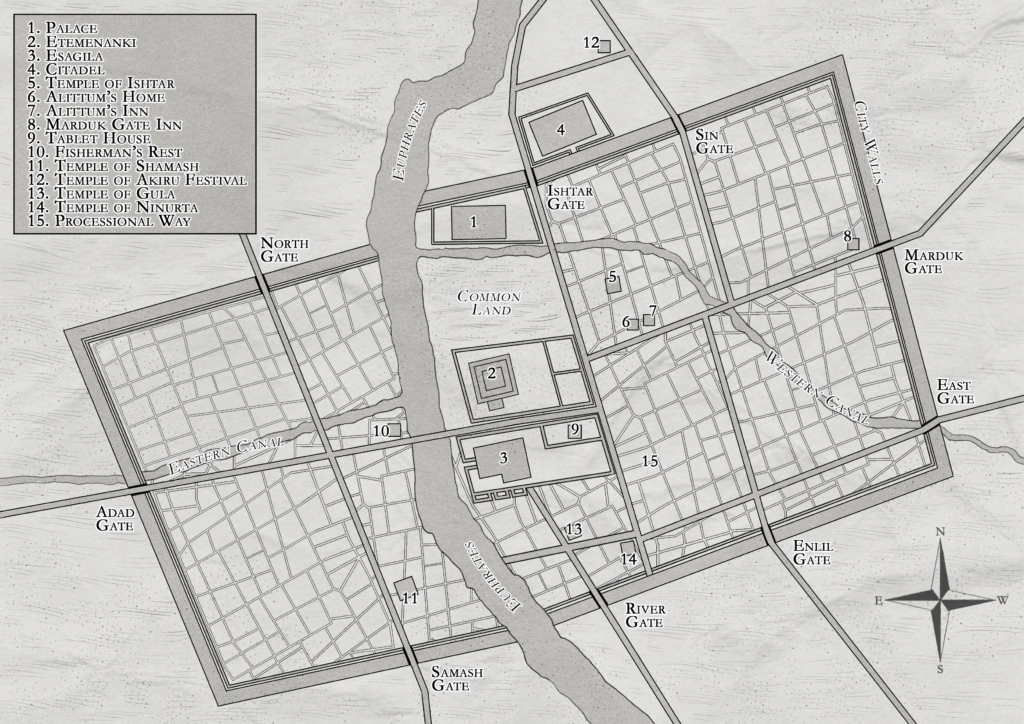
Son of Babylon is a book from the perspective of Hammurabi-bani, one of four sons of the legendary King Hammurabi. Bani actually means ‘son of’. There are clay tablets mentioning a Hammurabi-bani as being the son of a concubine in Hammurabi’s household, and so while I was unable to find much more in the historical record, Bani was at least likely to have been a real person.
What we know of Hammurabi himself comes in large part from the extraordinary caché of documents found in the archive of the royal palace at Mari. Unfortunately, after the sacking of Mari in 1761 BCE, the archives ended, and it seems many documents related to Babylon were removed.
The treasure that remains does allow us to know a lot about what was happening during Babylon’s rise, however. Most of the characters from Hammurabi’s court found in Son of Babylon were real people. I also tried to keep them in their historical roles. We have other clay tablets, including letters between Hammurabi and his advisor Sin Iddinum, which flesh out what the archive shows us.

Hammurabi-bani had at least three brothers or half-brothers that we know the names of, so Mutu-numaha, Sumu-ditana and Samsuiluna were all real too. Hammurabi had a daughter who married Silli-sin of Eshnunna, as Anni does in Son of Babylon, however her real name is not known.
The ruins of Babylon itself, at least those layers from Hammurabi’s time and before, lie below the water table. Their secrets are still to be learned. Given the ancient Mesopotamian habit of building replacements directly over old temples and other structures, I have chosen to keep the rough layout of Babylon from the much later, and better studied, period of Nebuchadnezzar II.

I tried very to hard to construct a story based on real history, rather than simply using it as a setting. However, this is after all a story, and not a history book. One deliberate misrepresentation is the promotion of Marduk to the head of the pantheon. It is my understanding that while in Hammurabi’s time the role of Marduk was certainly increased in importance, his full elevation happened later. Any inadvertent errors are mine alone.
I know of very few novels about, or even featuring ancient Mesopotamia. Perhaps the most famous representation is Wilbur Smith’s Warlock, part of his Egypt series, in which the action briefly moves to ancient Babylon. Warlock was certainly the book that planted the seeds of my curiosity in this amazing culture and time period.
In comparison, there are tens of thousands of books on the other great ancient civilisations, especially the Romans, Egyptians and Greeks. This is despite the fact that the Mesopotamians profoundly influence the world today. Their civilisations created writing, the origins of our legal systems, the foundations of our mathematics, indoor toilets, and far more, too much to name here. One of my hopes for this book is that it will pique the interest for readers to find out more about the Babylonia of Hammurabi, the Sumerians and Akkadians who came before him, and the Assyrians and Persians who followed.
Leave a Reply